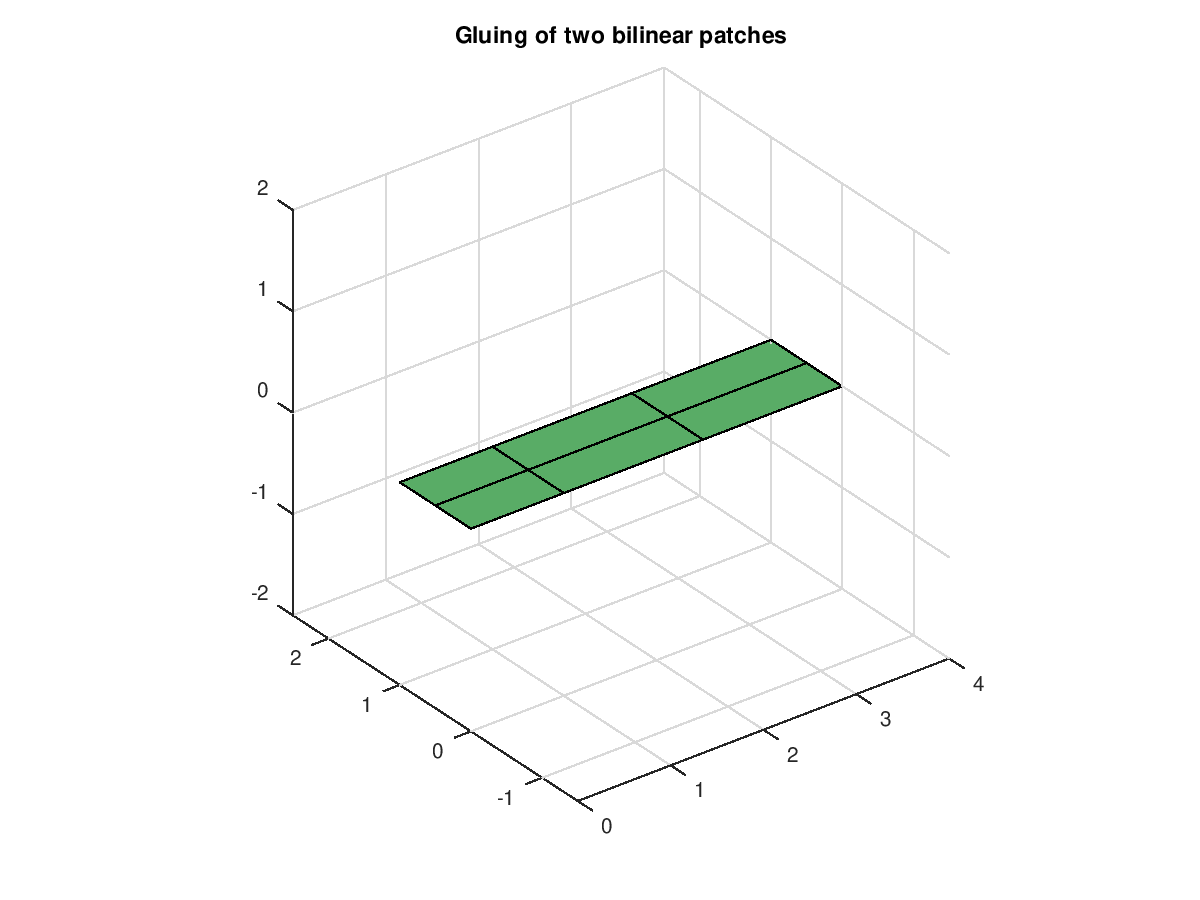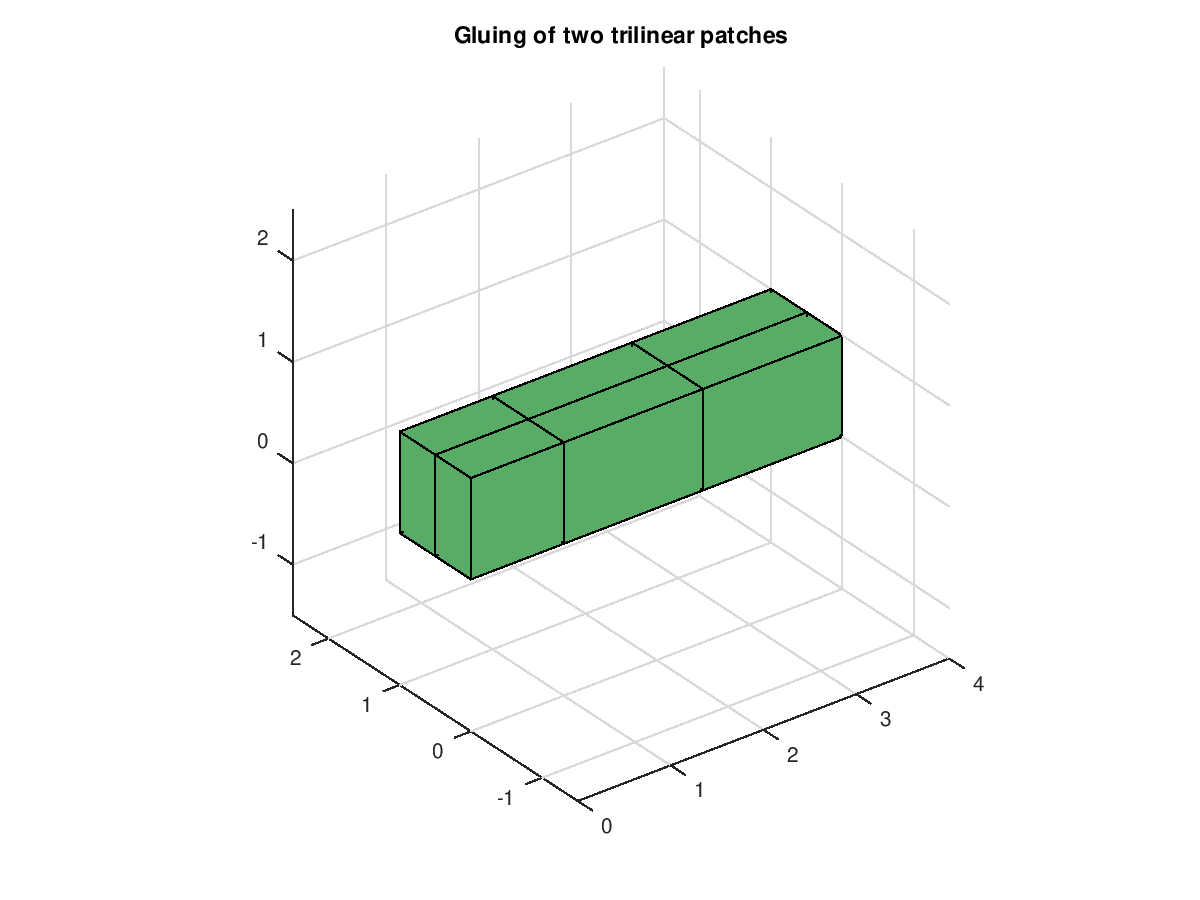NRBGLUE: Glues two NURBS patches together with C^0-continuity at the
interface.
Calling Sequence:
glued = nrbglue(nrb1, nrb2, [side1, side2])
INPUT:
nrb1 : first NURBS struct.
nrb2 : second NURBS struct.
side1 : index of the boundary side of nrb1 to be glued (optional).
side2 : index of the boundary side of nrb2 to be glued (optional).
OUTPUT:
glued : Glued NURBS struct.
The resulting NURBS struct has the same orientation as nrb1.
Description:
The orientation of the NURBS boundaries:
^ V direction
|
|
|
|
/---------> U direction
/
/
v W direction
The indices of the NURBS boundaries (see also nrbextract):
1 : U = 0
2 : U = 1
3 : V = 0
4 : V = 1
5 : W = 0
6 : W = 1
Copyright (C) 2019 Ondine Chanon, Rafael Vazquez
This program is free software: you can redistribute it and/or modify
it under the terms of the GNU General Public License as published by
the Free Software Foundation, either version 3 of the License, or
(at your option) any later version.
Demonstration 1
The following code
nrb1 = nrbline([0,0],[1,1]);
nrb2 = nrbline([1,1],[3,4]);
glued = nrbglue(nrb1, nrb2);
nrbkntplot(glued)
title ('Gluing of two straight lines')
Produces the following figure
| Figure 1 |
|---|
 |
Demonstration 2
The following code
nrb1 = nrbsquare([0,0],1,1,[1,1],[1,2]);
nrb2 = nrbsquare([1,0],3,1,[1,1],[2,2]);
glued = nrbglue(nrb1, nrb2);
nrbkntplot(glued)
title ('Gluing of two bilinear patches')
Produces the following figure
| Figure 1 |
|---|
 |
Demonstration 3
The following code
nrb1 = nrbsquare([0,0],1,1,[1,1],[1,2]);
nrb2 = nrbsquare([1,0],3,1,[1,1],[2,2]);
nrb1 = nrbextrude(nrb1,[0,0,1]);
nrb2 = nrbextrude(nrb2,[0,0,1]);
glued = nrbglue(nrb1, nrb2);
nrbkntplot(glued)
title ('Gluing of two trilinear patches')
Produces the following figure
| Figure 1 |
|---|
 |
Package: nurbs